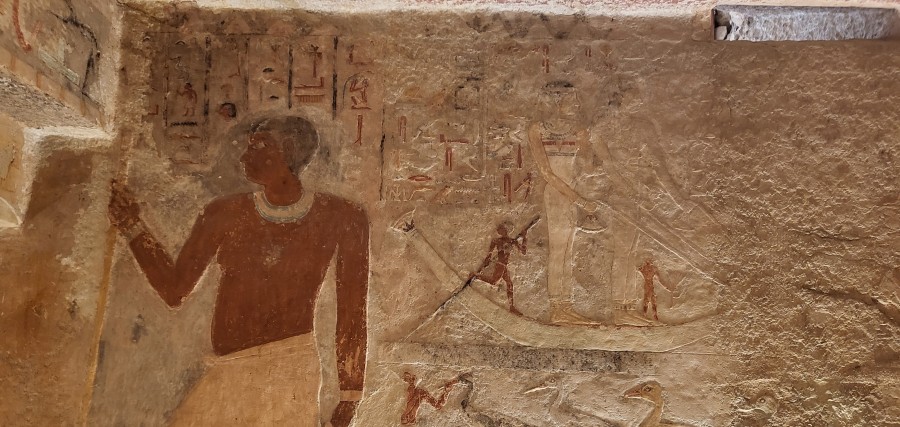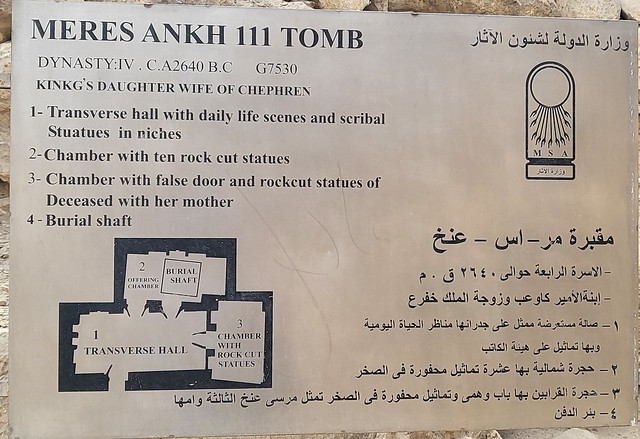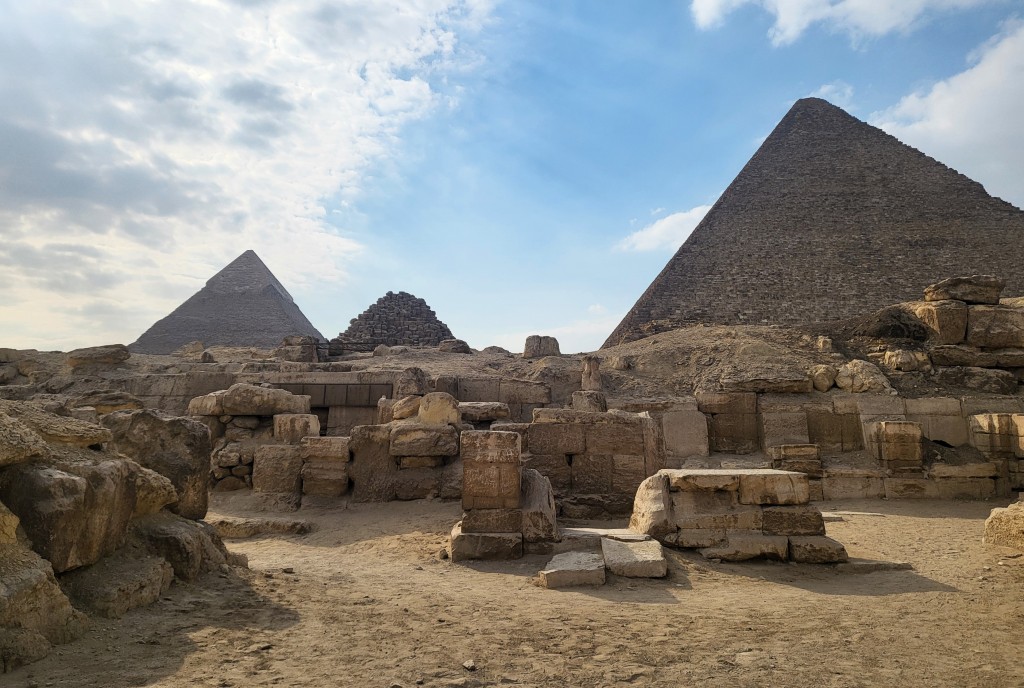
The Eastern Cemetery
East of the Great Pyramid, arranged in careful blocks, like a suburb of the dead, are a series of large mastaba (bench) tombs belonging to the nobles of Khufu’s court. The format for these tombs was relatively simple, the masonry ‘bench’ structure contained the offering places and, later, the more extensive tomb chapels, in which the cult of the dead was celebrated. The deceased with their grave goods were buried in subterranean tomb chambers, accessed via various burial shafts, concealed within the masonry structure. Most of these mastabas are closed to the public, although a rotating series of more interesting, well-preserved, and decorated tombs are accessible as part of the Giza Plateau ticket. (These include but are not limited to; G6020 Iymery; G7101 Qar; G7102 Idu; G7130-40 Khufukhaf; G7060 Nefermaat; G7070 Senefrukaef; Lepsius 53, Seshemnefer IV.) The tomb of Meresankh III is an exception to this rule. It is accessible only with a separate ticket and (after recent conservation) is almost always open.
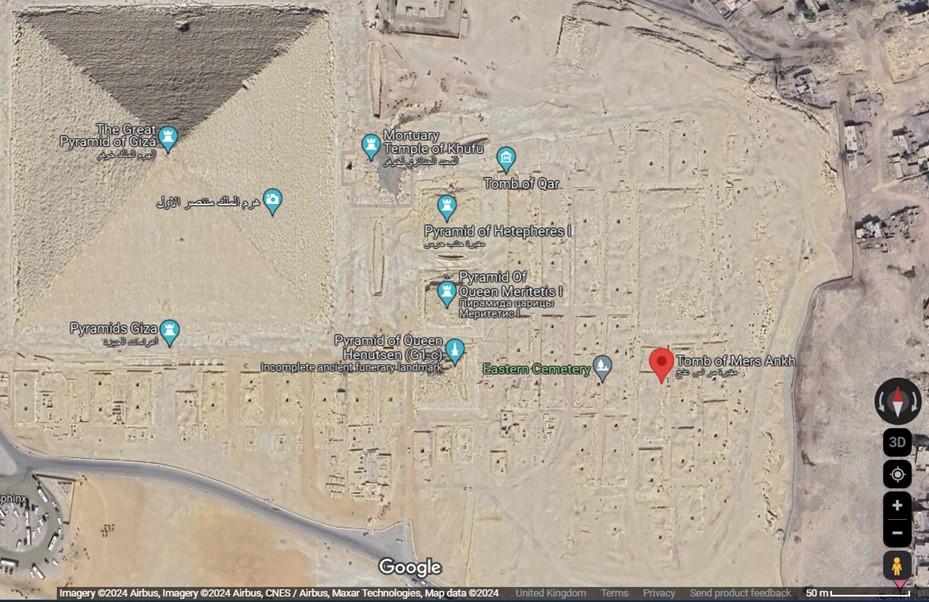
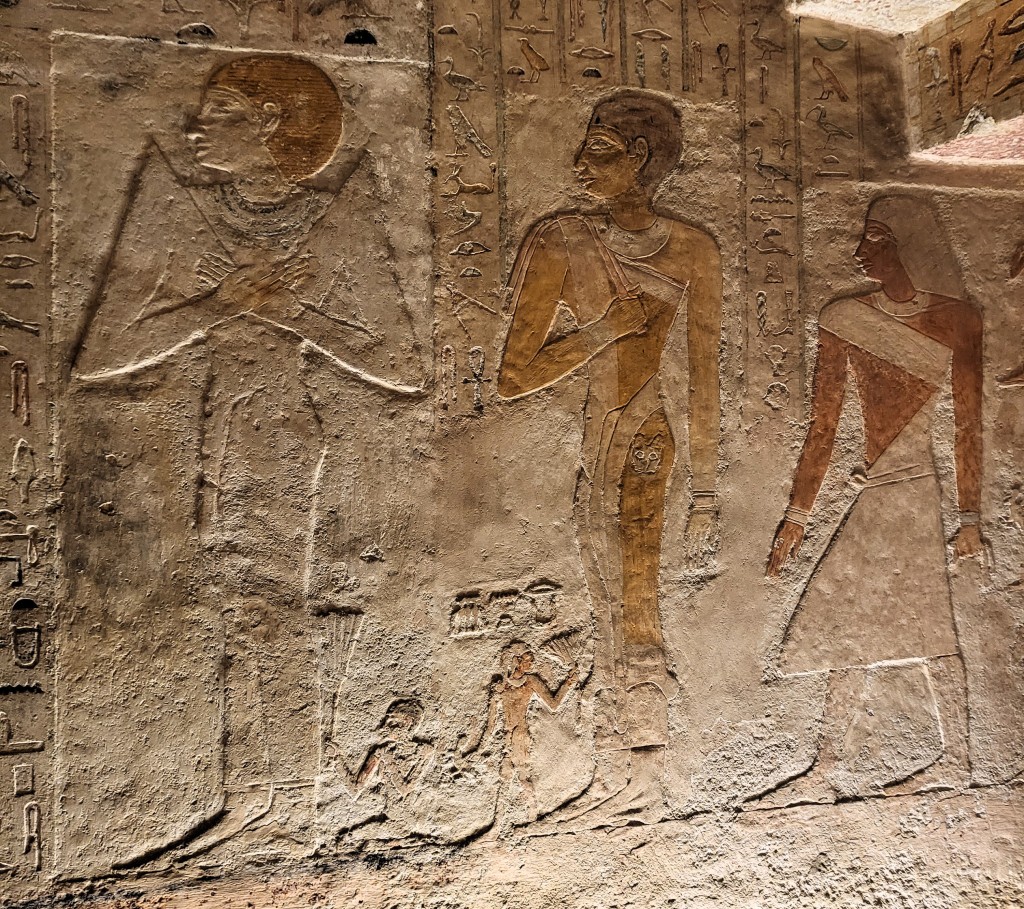
Visiting Meresankh III’s Mastaba G7530-G7540
Meresankh III’s tomb is mastaba G7530-7540, roughly in the middle of the Eastern Cemetery, between the Great Pyramid and the valley. Surprisingly, the Google maps Tomb of Mers Ankh pin is almost exactly correct, just to the left of the subterranean tomb entrance (previous image). For those with small folk, it is also quite child-friendly. The scenes and statues are interesting and retain some of the paint, the burial chamber is easily accessible and, the tomb isn’t too large for a five-year-old attention span. Plus, for those with Disney-obsessed kids, she’s an actual bonafide princess and Queen!
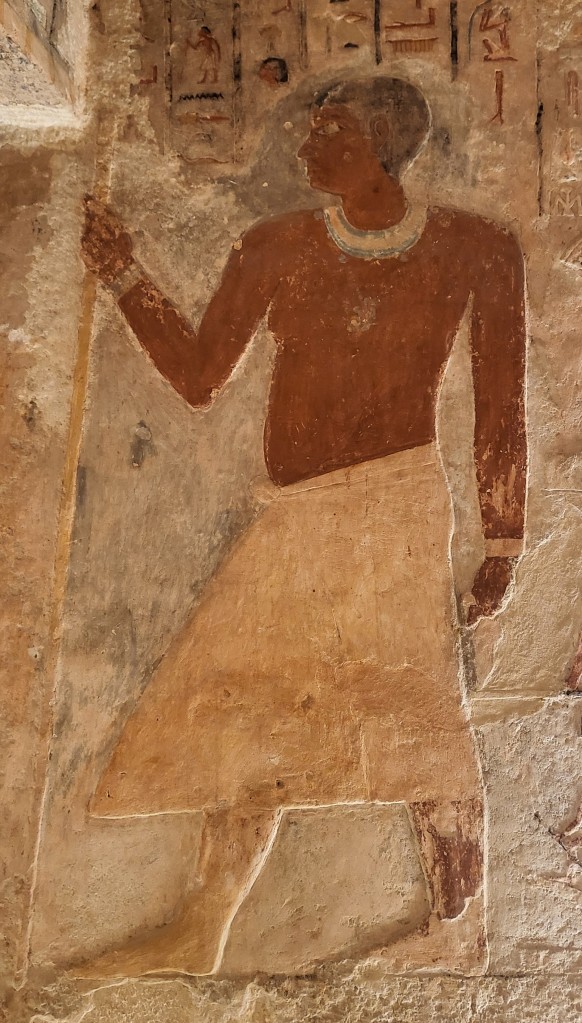
Meresankh III
Meresankh III was a granddaughter of Khufu, builder of the Great Pyramid, and wife of Pharaoh Khafre. Her Father, the eldest son of Khufu, Prince Kawab, is featured on the east wall of the first chamber. Her mother, Hetepheres II appears several times, and her son Nebemakhet, appears behind Hetepheres II and Meresankh III in a scene on the west wall of the first chamber. Khenterka, probably Meresankh’s son, and Niuserreankh and Duaenre, either sons or grandsons, also feature in the decoration. Other members of Meresankh III’s family and her familia (in the Roman sense of the wider group of unrelated dependents, servants and craftworkers who worked for or were patronised by her) also appear in various locations in the tomb and are listed on Digital Giza.
Her tomb: Giza mastaba G7530-G7540
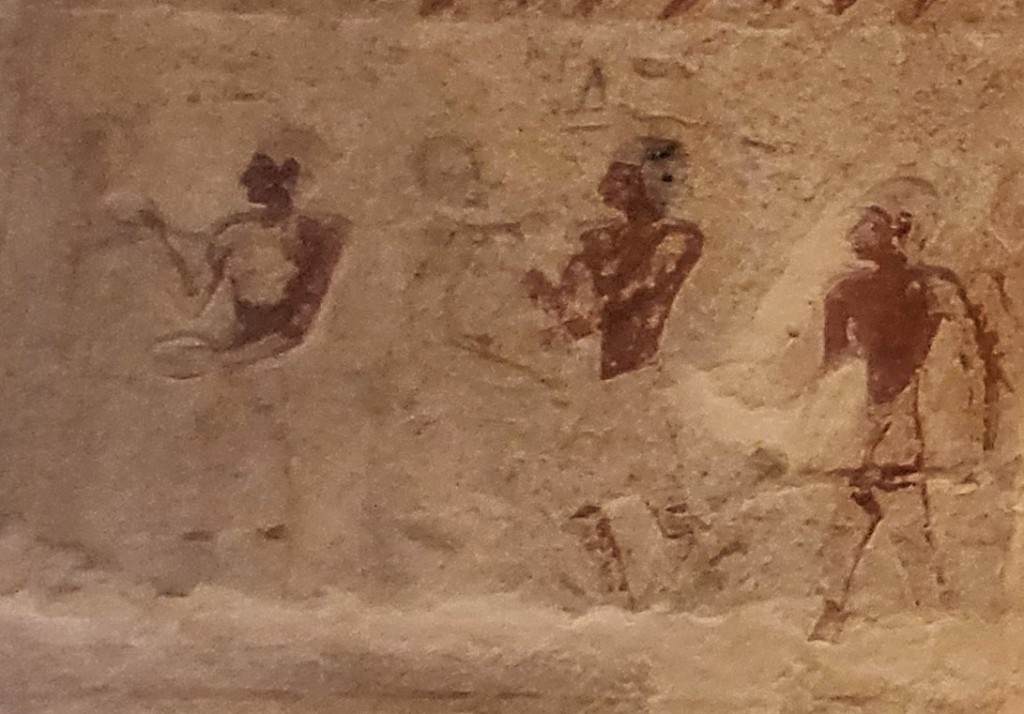
The tomb is unusual in that the chapel is semi-subterranean, which is probably partly responsible for its good state of preservation. It was discovered on 27 April 1927, during the Harvard University – Boston Museum of Fine Arts Expedition’s work in the Eastern Cemetery. You can view the excavation photographs on the Digital Giza website and the publication ‘The Mastaba of Queen Mersyankh III (G 7530-7540)‘ can also be downloaded in pdf form from there. Digital Giza contains a tour through a 3d model of Meresankh’s tomb with details of the tomb’s scenes, and a further link to a Youtube video where Meresankh III gives a tour of her own tomb and its many features. Another shorter video on the Digital Giza website, provides more details about the tomb. The latter is incredibly useful, both for the details of the tomb and burial, and because it shows how the surviving stone architecture of these tomb chapels was once enhanced with wooden doors and partitions.
The unfinished tomb consists of a three-room ‘chapel’, shaft, and lower burial chamber. The first chamber is comprehensively decorated with offering scenes, ritual scenes, and representations of Meresankh’s family. Unusually, the names of the craft workers who decorated the tomb are preserved amongst the inscriptions on the south and east walls. The south wall also contains a relief of Khetmetnu, the steward, two engaged statues of unnamed male scribes in niches, and a further group of four scribal statues cemented into a niche.

At the north of the first chamber, another chamber contains 10 engaged statues of women. Only Meresankh III is mentioned in the single inscription above the statues, the other walls remaining uncarved. The video tour suggests that these 10 engaged statues represent Meresankh’s female relatives, and their significance in her life. Engaged statues are relatively rare in mastaba tombs at Giza, although they also appear at Saqqara, but surprisingly none of the statues in Meresankh’s tomb are named, except for the inscription naming her above the 10 statues in the north chamber.
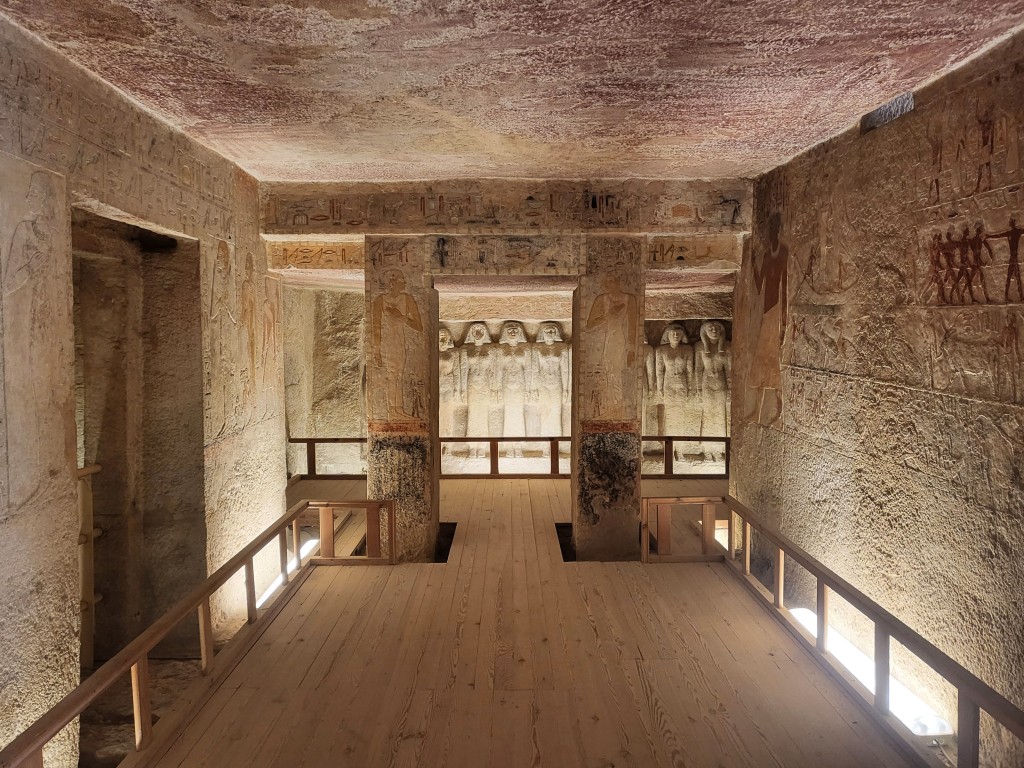
The offering chamber, to the west of the first chamber, has a deeply carved false door above the shaft to the burial chamber, flanked on each side by a pair of engaged statues and a further palace-facade false door. The shaft to the burial chamber lies in the centre below the main false door. This ensured that once the shaft was sealed, offerings placed in front of the false door were as close as possible to Meresankh’s body, in the chamber beneath, giving her spirit easy access to the sustenance provided.
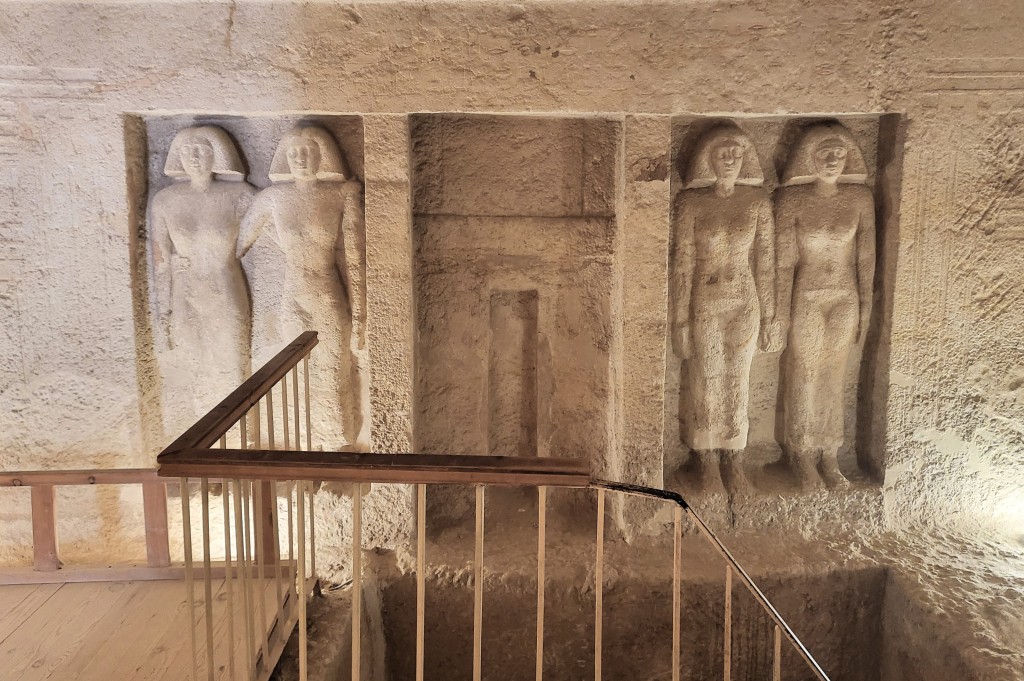

The well-carved shaft is over 5 metres deep. A set of modern steps gives access to the burial chamber, but the carved semi-circular holds used by the ancient Egyptians to climb down the shaft are visible, cut into the shaft’s sides. Although the tomb was robbed, Meresankh’s skeleton was found in her sarcophagus. The sarcophagus is now amongst the statuary on the Grand Staircase of the Grand Egyptian Museum and is carved with an inscription informing us that ‘it’ was a gift from Hetepheres II, Meresankh’s mother. In light of this inscription, since the tomb is unfinished and Hetepheres II is prominent amongst the decoration, it has been suggested that the entire tomb was originally made for Hetepheres II and subsequently given to Meresankh III. It is just as plausible that Hetepheres II gifted Meresankh III a sarcophagus and not an entire tomb.
Whatever the exact history of the tomb, it is a beautiful example of Old Kingdom art and architecture. It is also rather less busy with tourists than the tombs accessible as part of the Giza plateau ticket, and small enough and attractive enough to visit with children. Although the ticket costs extra, it is well worth the price, to see such a beautiful gem in the midst of the Eastern cemetery.
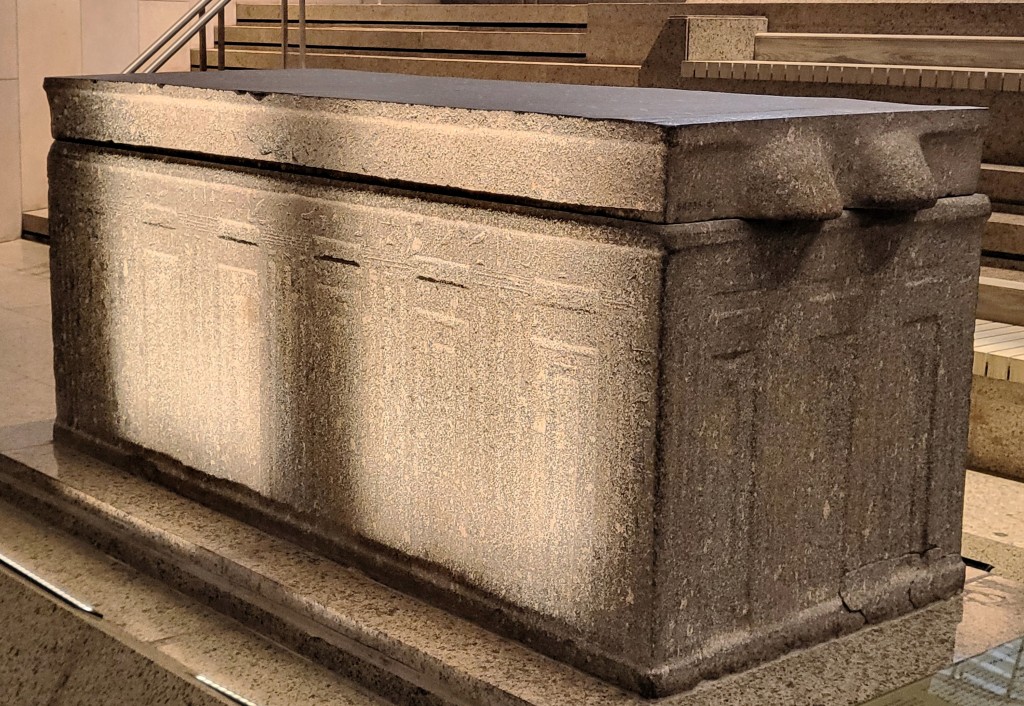
References
Dunham, Dows, and William Kelly Simpson. The Mastaba of Queen Mersyankh III (G 7530-7540). Giza Mastabas 1. Boston, Museum of Fine Arts, 1974.
A full bibliography for the tomb of Meresankh III can be found on the Digital Giza website entry for the tomb; http://giza.fas.harvard.edu/ancientpeople/236/full/#published
For a plan of the Eastern Cemetery see; http://giza.fas.harvard.edu/sites/167/full/
For the various open mastabas in the Eastern Cemetery see;
Image repository
I’ve now upgraded my Flickr account to house all the photos I take during visits to museums, galleries, and sites. Over the coming months, I’ll be uploading more of my images, and editing those already on the site, but you can now view all my images from the visit to the tomb of Meresankh III in February 2024 in my Flickr album ‘Tomb of Meresankh III, Giza mastaba G7530-G7540′. All the images are posted on an ‘Attribution – Non-commercial’ license so you are welcome to download and make use of them on that basis. The title of each photo contains essential information. Additional information can be found in the description section for each image, and they are also tagged extensively.
Find out more
Related posts
-

Grand Egyptian Museum: Grand Staircase Review
-

Grand Egyptian Museum Atrium and Immersive Tutankhamun: Review
-

Review of the re-displayed Egypt and Sudan gallery of the Manchester Museum
